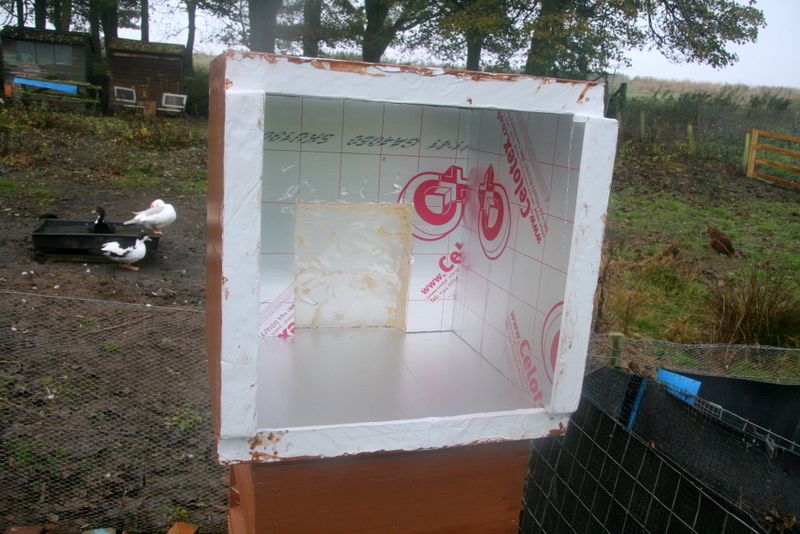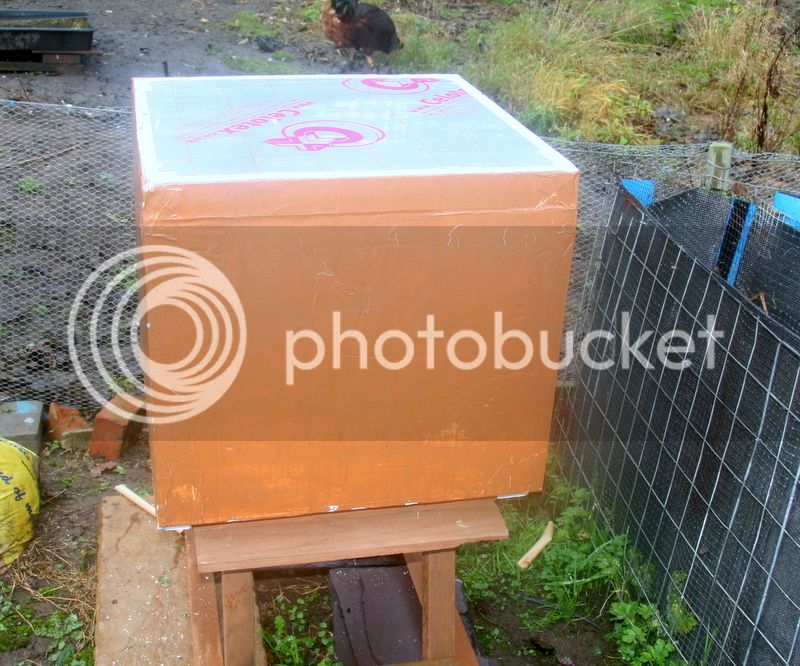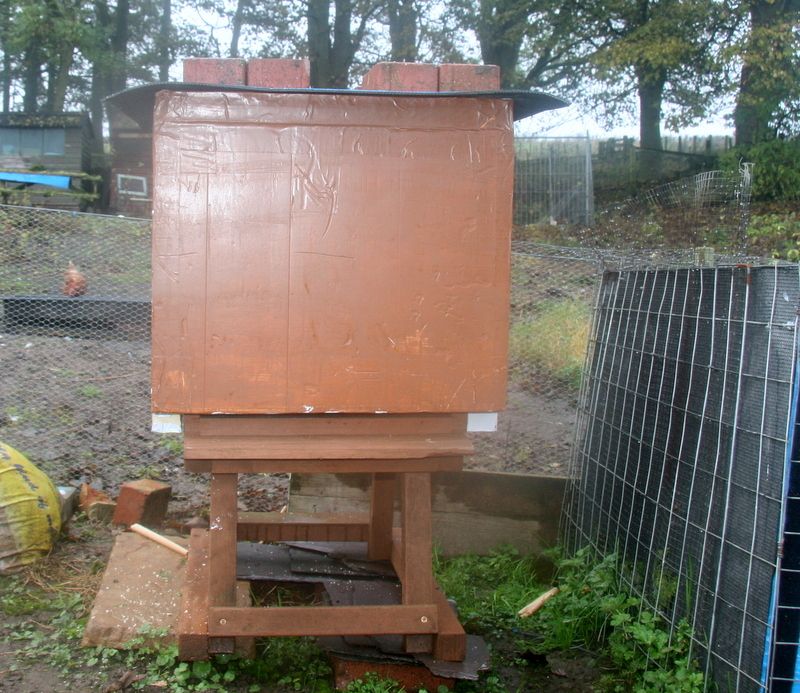- Joined
- Jun 4, 2015
- Messages
- 9,135
- Reaction score
- 14
- Hive Type
- National
- Number of Hives
- 17 nucs....
Is this up to your standard's ..lol.. i may have done a mistake but i will find out next spring..it's 50mm kingspan around the body and 100mm on the roof .. the bit on the inside roof is cut out out take feed if need be...above that is 50mm kingspan it's all masticked and taped together and totally air/water proof..
This is a dummy hive by the way .. my main one is elsewhere..



This is a dummy hive by the way .. my main one is elsewhere..






